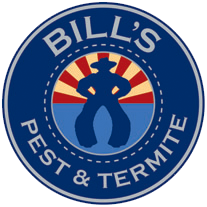Arizona’s termite season seems to be off to an early start.
Termite swarms in Arizona usually occur during the summer months following afternoon rains.
This year rain totals for Metro Phoenix are up combining with rising temperatures to create conditions conducive to swarming termites.
Local termite expert Bill Trott, owner of Bills Pest and Termite Co reports “Termite swarming calls are up 60% over last year-to-date.”
“This volume of calls is about two months early when compared to years past,” added Trott
The US Department of Agriculture reports over $750 million in damage is caused by termites each year.
According to the Arizona Office of Pest Management, the most common termite in Arizona is the subterranean termite. A good barrier between the ground and the wood in our Arizona homes is extremely important. Homeowners are advised to look for (source: Office of Pest Management):
1. Cracks in foundation walls. It only takes a crack 1/32 of an inch wide to give termites and other wood destroying insects hidden access to your home.
2. Leaking pipes and faucets. Termites as well as other insects, seek out moisture for survival. Leaking pipes can keep wood and soil continually damp and create a perfect home for termites.
3. Wood debris around and under a house. Pieces of scrap lumber or firewood kept next to a structure can support a colony of termites.
4. Sprinkler systems or bubblers placed near the outside wall of a structure. Excessive watering can dilute pesticide treatments around foundation walls.
5. Flower planters. Planters allow hidden and direct access to unprotected siding and cracked stucco when built in direct contact with a house.
6. Trellises and wooden fences. If a trellis or wood fence touches soil and is in contact with a structure, it provides a direct link between the subterranean termites in the soil and wood in the structure.
All of these conditions are things that termites and termite inspectors look for, and so should the homeowner. By eliminating these conditions, you can reduce the risk of infestation. However, it is important to remember that all homes are at risk to termite infestation, and should be inspected by an experienced termite inspector at least once a year.
Bills Pest and Termite Co offers free termite inspections, for more information email us @ Bills Email or call 602.308.4510
Welcome to Arizona's Termite information Center
Depending upon which termite expert you speak with Arizona is home to 25 or less species of termites. Not all termites are the same and it is important to be able to identify and detect the various species of termites living in Arizona. Bills Pest and Termite is Arizona's Termite Experts. We offer full pest control services in Phoenix Arizona and Phoenix termite treatments and termite inspection services. For more information visit us @ Bills Pest and Termite or call us @ 602.308.4510

